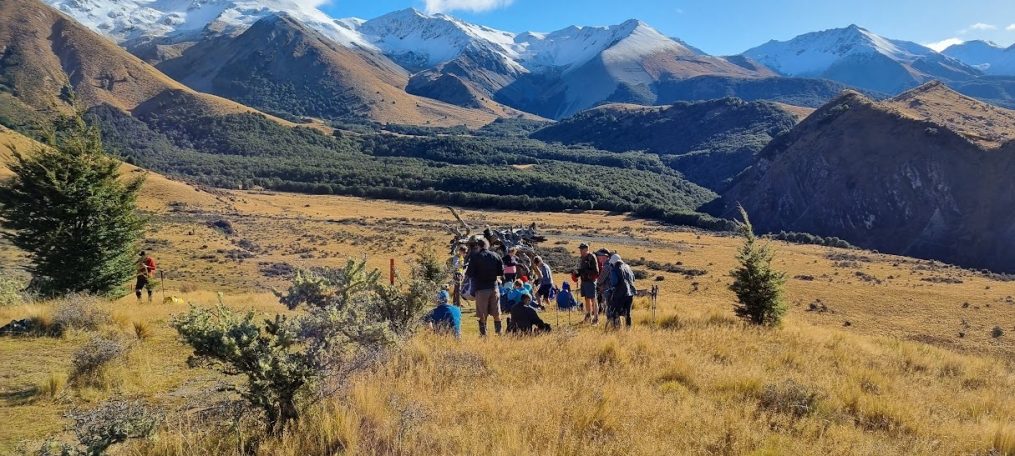| Leader | Mentor | Understudy | Tail Ender | |
| Standards | Glenys | Judy R | Brent | Sally |
| Alternates | Norma | Kay L | Kay L | Marie-Therese |
Distance 9km Vertical ascent 480m Duration 4 hours
With a forecast high of 220C for Christchurch City, our cheerful trampers boarded the bus at Bishopdale with expectations of an excellent day ahead.
Our driver Stuart had to face at least three extra challenges before we could start walking. Firstly, a very short extra wait at PMH for a late “caught in traffic” arrival; next a careful and tactful wait at the intersection with Dyers Pass Rd for a “we almost left you behind, sorry” member after the Takahe toilet stop; and third was our arrival at the John Jameson Lookout Carpark to find the gate still closed and locked! He remained delightfully calm throughout these interruptions.
When the 38 trampers emerged from the bus, we grabbed jackets, hats and gloves as protection from the unexpectedly strong cold wind and fog funnelling up from the Governors Bay side over us. Brrrr….
Now, with all the negative vibes left behind, we all hoped that guests John and Mark and visitor Bruce would enjoy their hike with us. We set off across the road to the Sign of the Bellbird on the first circle of our planned figure of eight tramping loop. The Standards followed the Orongomai Trail in Kennedy’s Reserve down into the valley while the Alternate group started on that trail too before taking the Fantail Track which gave them a shorter loop. The highlight for both groups, other than the beautiful forest, was the flitting and chirping presence of numerous pīwakawaka (fantails) all the way around. They seemed delighted with our company and the fact that we were stirring up the track surface for them. There was always at least one alongside us all the way – magic! Apparently pīwakawaka live very short lives – no more than 3 years – but they reproduce 2 or more times per year.
By the time the Standards arrived back at the Bellbird Shelter for morning tea, the Alternate group had long gone to continue on the second section of the figure of eight. Fortunately the wind, though still cool, had calmed a bit so that the walk down the Cass Ridge Track to join O’Farrells Track was surprisingly pleasant.
O’Farrells Track sidles along above Governors Bay with shelter from healthy bush and some stunning views. Clouds had gradually cleared away so that the harbour looked very picturesque. Constant birdsong accompanied us along this section too and we felt appreciation for the many volunteer hours of trapping and track maintenance regularly carried out in this area. Once we joined the Bush Road Track with its steady climb upwards to thoroughly warm us up, there was less chatter until we reached somewhere to perch in sunshine for lunch.
We joined the Crater Rim Walkway above the Summit Road to return to our waiting bus by 1.30pm – after a relatively short but very good day out hiking. Thank you to the planning team for mapping out this new hike for us.
During the day we had seen the result of major fire damage to many sections of the land during the Port Hills fires of mid-February 2024. We also noted that the sculpture that has been a stunning new feature of the John Jameson Lookout was missing from the top of its substantial plinth. These have recently introduced a rather sad aspect to Christchurch’s beautiful Port Hills. We look forward to its recovery.
Text by Janne





































































